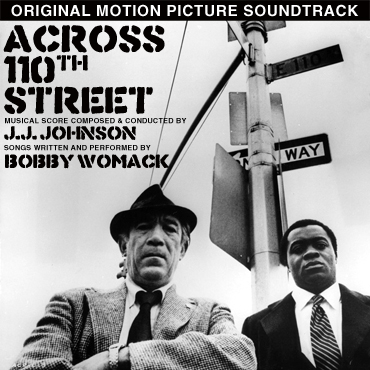
Illustration by Larry Scott
“Nights on Broadway” is a hip-hop story in every sense of the word. Not only does it take place in the world of graffiti during the years that Kool Herc and company were creating new sounds from old records, but it is also a remixed version of another story I wrote a few years ago. Entitled “The King of Broadway,” it originally ran on the provocative Afro-arts website Nat Creole.com in 2005.
Although the stories are relatively the same, the major difference was adding the blue-eyed soul element of the Bee Gee’s song “Nights on Broadway” to this New York tale of school kids in 1970s Harlem and Washington Heights. Growing-up in these same areas during that same period, the funky white boy groove was one of my favorite jams.
Hearing the track one night in a Brooklyn bar thirty years later, memories of former pop station WABC and school friends from St. Catherine of Genoa made me want to revisit my story. It was then that I decided to do a textual remix in the tradition Grandmaster Flash, Marley Marl, DJ Premier Rza and DJ Shadow—just to name a few.
Without a doubt, these master turntablists had been an influence on my writings as much as the countless writers, journalists and filmmakers I consume on a daily. In my mind, doing a cool remix of an existing story was a way of paying homage to the sonic scientists who introduced me to the concepts of Black futurism, deconstruction and the rhythmic power of noise. Though I am proud of both pieces, it is the remixed version that I prefer.
The beautiful illustrations for this story were done by the late Baltimore artist Larry Scott. A fellow Cancerian, we met at a coffee shop called Xandos, which was across the street from the Baltimore Museum of Art. Introduced by New Jack City screenwriter and former Harlem resident Barry Michael Cooper, who had relocated to B-more in the ‘80s, Scott and I became fast friends.
Art critic and curator Franklin Sirmans was one of the many folks turned out by Scott’s work. Reviewing the artist’s 2005 show “Evolution of Depression,” he wrote, “The drawings almost feel like he’s working 3-D constructing forms with the line. Then there’s the almost abstraction of the work. The thing that hooks me is the simplicity/complexity of the black and whites..they just look mad original and damn good.”
The same year, the alternative weekly The City Paper voted Scott the Best Visual Artists in Baltimore. A few months after his show, I asked Larry if he would be kind enough to add his visual brilliance to my story. Without hesitation, he promised to give me something in a few days.
Though Larry wasn’t of the hip-hop generation, having grown-up a fan of John Coltrane and Miles Davis, he had recently began listening to Tupac, Biggie and 50 Cent and using their gritty poetics to jump-off a new series called “Ready to Die…?”
Come the following Friday, when Larry told me to meet at the usual spot at six o’clock, I was shocked when he gave me an envelope containing twelve separate pen and ink drawings. Though not an art expert, I know what I like and Larry’s work had an effect on me. Like German-Expressionism, film noir and East Coast hip-hop, Scott’s work had a sense of urbane despair that embraced the decadence and danger of the city.
Studying his masterfully atmospheric drawings, I almost cried at the sheer perfection in which Scott captured the pain and joy, laughter and anguish of these characters. Flipping through the dozen related images, one could feel the power of Scott’s vision as he created his own flavor of be-bop/beat-box visualizations.
Although we often spoke of future collaborations, this was not to be. In November of 2007, after leaving the coffee shop portfolio in hand, Larry Scott suffered a fatal heart attack. His body was found sprawled on the sidewalk the following morning. A husband and father, Larry Scott was 50 years old. This remix is dedicated to him and the beauty of his work.
To read the story, go to: http://h2c2harlem.com/blog
Labels: Crack Fiction, Fiction, Graffiti, Harlem, Michael A. Gonzales, uptown


























